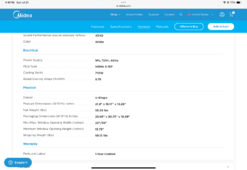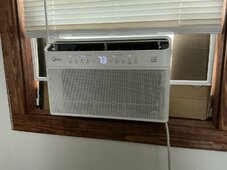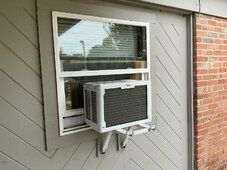Hi all, I am finally ready to start purchasing solar and want to start small. Then get the 18k inverter later. First project is to power a window ac unit, it is a midea U snapped ac unit (8k btu) specs are below. Your help in design and specifying the solar equipment would be much much appreciated. The initial though is to purchase mounting (Integra rack ir3o mounts), aptos 370 watt biracial panels, some type of inverter… , battery , and wire it all up to power the little unit.
I like to plan very well, before spending $ and making mistakes. all I ordered so far is the kuman kw47 power usage monitor ( $12 ) to see actual power consumption and to be able compare to attached data sheet specifications of the window unit.
Next steps, determine how many aptos 370 watt solar panels to purchase and how many integra rack or 30 mounts, wiring, battery and inverter to purchase.
Ideally these items would be able to be used with the eg4 18k ( once I am more comfortable with understanding solar, then I would go for a big system).
( so this is a requirement of the little project, design such that can use the same equipment for the big system or as much of it as can be used )
as I go along I will share what ever I learn here and track the progress of the project.
Your comments and review and experience and knowledge will be a large part of my training
Appreciate you and thank you in advance for help and ideas to move forward.
Chad S
I like to plan very well, before spending $ and making mistakes. all I ordered so far is the kuman kw47 power usage monitor ( $12 ) to see actual power consumption and to be able compare to attached data sheet specifications of the window unit.
Next steps, determine how many aptos 370 watt solar panels to purchase and how many integra rack or 30 mounts, wiring, battery and inverter to purchase.
Ideally these items would be able to be used with the eg4 18k ( once I am more comfortable with understanding solar, then I would go for a big system).
( so this is a requirement of the little project, design such that can use the same equipment for the big system or as much of it as can be used )
as I go along I will share what ever I learn here and track the progress of the project.
Your comments and review and experience and knowledge will be a large part of my training
Appreciate you and thank you in advance for help and ideas to move forward.
Chad S





